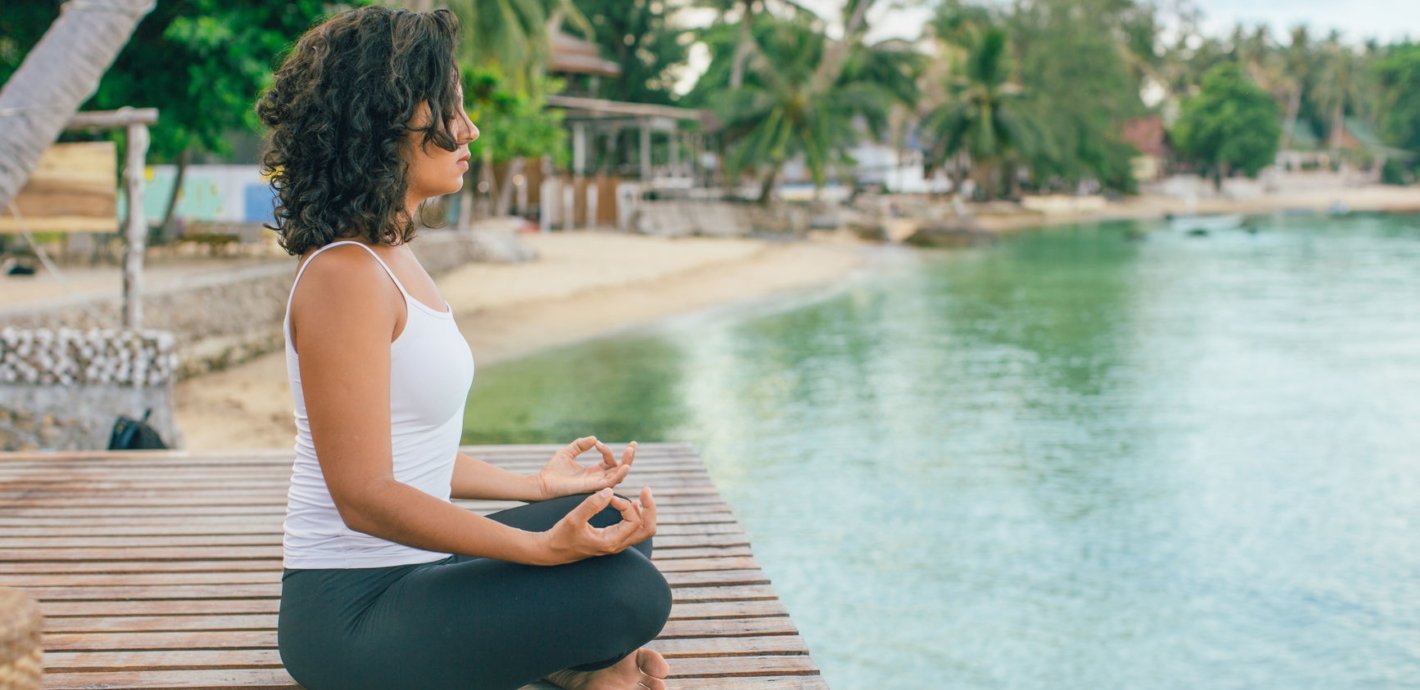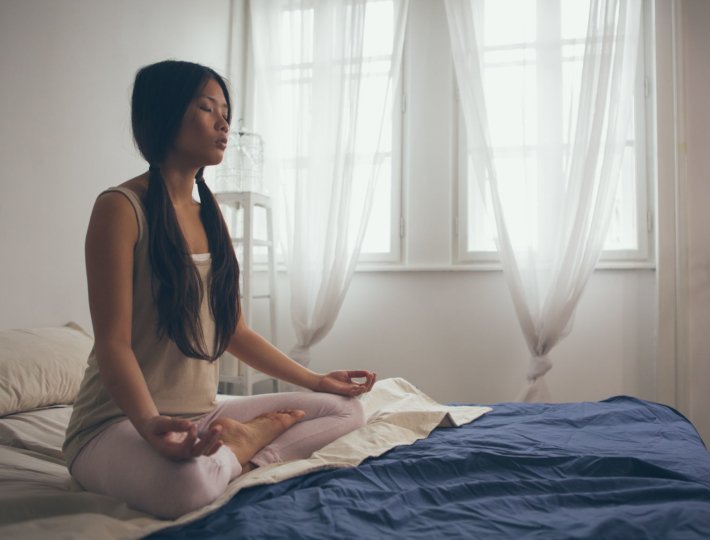Meditation is incredibly versatile. You can practice it anytime, anywhere. However, according to the ancient texts, there is a preferred way of positioning your body during meditation for the best possible results. Here are the four main elements of proper meditation posture to maximize the benefits of your practice.
Meditation Posture Tip #1: Keep your back straight
You’ve probably heard that you should sit as upright as possible when you meditate, and there’s a good reason for that: When we shut our senses off through meditation, we take our energy inward. That energy connects with and enhances the energy of our chakra centers. These chakras line up along our spine, so in order for them to be aligned, the spine needs to be straight. This also allows energy to flow freely through the chakras. In addition, keeping your back straight enhances your breathing, as you’re able to maintain smooth, relaxed inhalations and exhalations without any extra effort.
Meditation Posture Tip #2: Sit on the floor
These days there’s a lot of flexibility in where we sit for meditation—you can sit in a chair or even do meditation in bed. But to get the most out of your session, you should sit on the floor. This allows your root chakra at the base of your spine to be grounded into the floor and connected with the earth’s energy. What’s more, a seated position allows energy to flow upward from the earth, through your spine, to the crown of your head.
Many people use a cushion to make sitting on the floor more comfortable. Wood is a bad conductor of electricity and does not let you connect with the earth’s energy, so if you have a wooden floor, using a cushion is especially important. The cushion material you choose also matters. Wool and silk are preferable, since they accumulate and possess the energy of the animals they came from. Cotton is the next best option.
The color of the cushion can make a difference, too. If you want an active, energized meditation, a red cushion is best. If you want a more peaceful, tranquil state of meditation, sit on a white cushion. And if you meditate for material gains and prosperity, choose a yellow cushion.
Meditation Posture Tip #3: Bring your legs into lotus pose
Lotus pose is a yogic asana, or position, and has its own physical benefits. The yogic texts say that blood circulation is very gentle but effective in this position. It’s said that if you sit in lotus position for about 20 minutes, you have a complete circulation of blood through every part of your body.
There are two variations of lotus pose—full lotus, where you cross your legs and pass them through each other, and half lotus, where you simply cross your legs. If full lotus is uncomfortable, half lotus is okay. If neither position works for you, you can take the support of the wall. Stretch your legs out straight in front of you and place a cushion behind your back to keep it straight and comfortable.
Related: A Simple Guide to the Complex World of Meditation
Meditation Posture Tip #4: Find a meditation spot
It’s not always possible, but meditating in the same place every day—in the same corner, in the same room, with the same cushion, at the same time—is beneficial. As much as possible, keep whatever elements you can the same on a routine basis. This helps to accumulate more energy in your environment and within yourself for a deeper, more grounded meditation practice.











Comments (0)